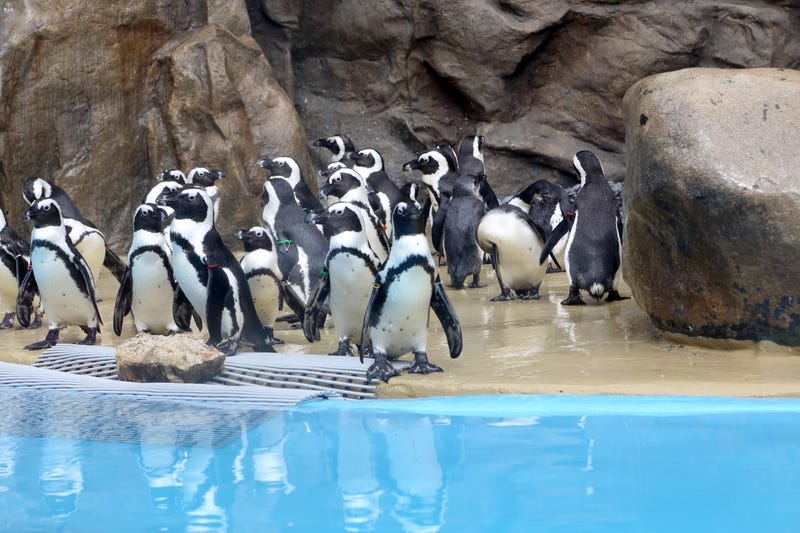
ROYAL OAK (WWJ) -- The penguins are officially back at the Detroit Zoo after over two years of taking a break for repairs.
The Detroit Zoological Society announced Monday that the Polk Penguin Conservation Center (PPCC) has reopened after closing in September 2019 for waterproofing repairs.
During the closure, the center welcomed a new species -- the chinstraps.
The Detroit Zoo said that the chinstraps – TJ, Haiku, Kringle and Turtle – quickly settled into the colony and are avid swimmers.
Now home to more than 75 king, rockhopper, macaroni, gentoo and chinstrap penguins, the zoo also announced that five chicks have joined the flock.
One of the chicks, Archie, is the first king penguin to hatch at the Detroit Zoo in 20 years. He was born in Aug. 2020 and zoo officials said he is "thriving."
Along with the repairs and the new species, the PPCC also received numerous enhancements, including the creation of more nesting areas, repainted rock surfaces, a second snow machine within the habitat and upgrades to the water and air filtration systems.
"The PPCC remains the largest penguin facility in the world and features a 326,000-gallon, 25-foot-deep aquatic area with breathtaking views," stated zoo officials. "An underwater gallery with a vast acrylic window and two tunnels allows visitors to watch penguins dive under water – something that is impossible to see in the wild."
Other upgrades include a section of glass flooring that allows guests to see penguins swimming below their feet, enhanced lighting and exhibits that focus on changing climate and the resulting loss of sea ice.
The PPCC is included with general admission; however, officials say that timed-entry passes are required to "ensure a safe and enjoyable experience" for all guests.
At least 2,000 passes per day will be available on a first-come, first-served basis at admissions.
If you would like to become a member or purchase tickets for the Detroit Zoo, click here. For assistance with a membership, you may also call customer care at 248-541-5717 and press 3.



